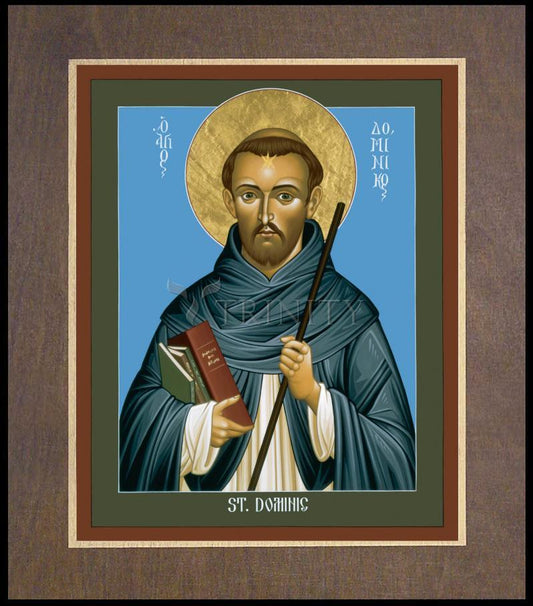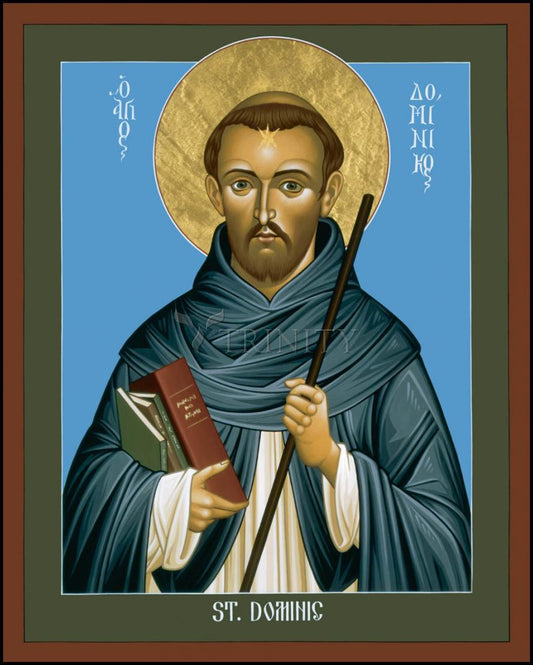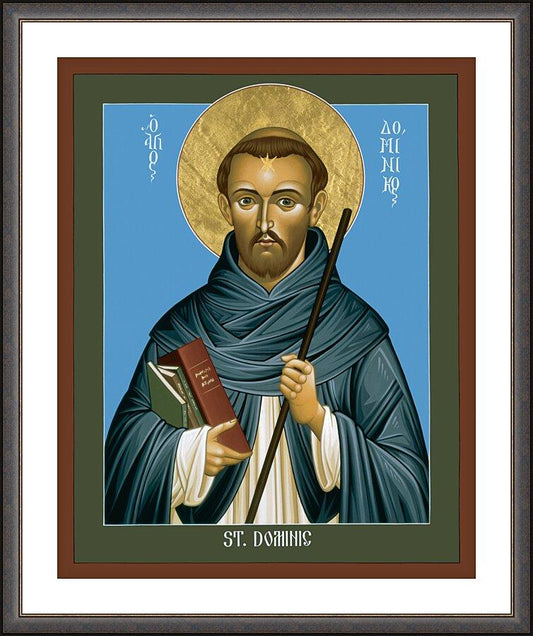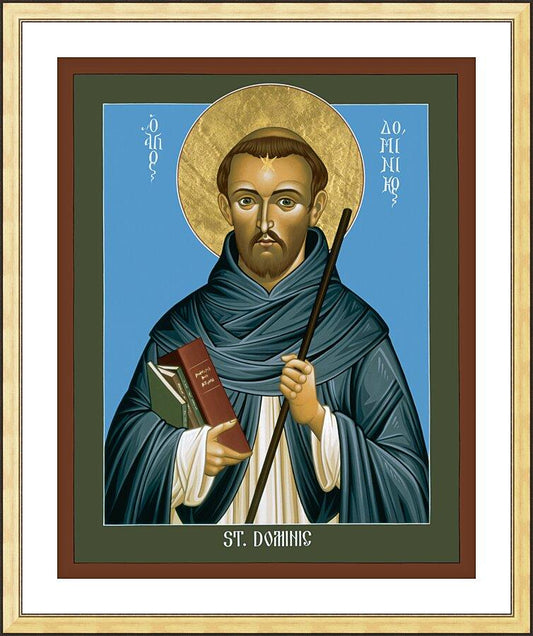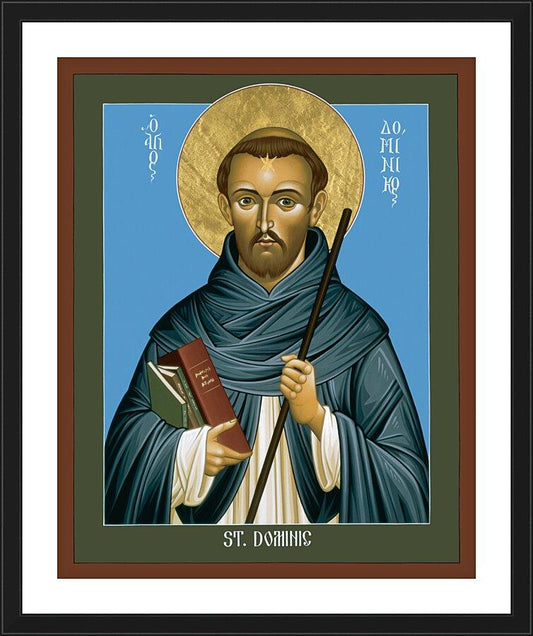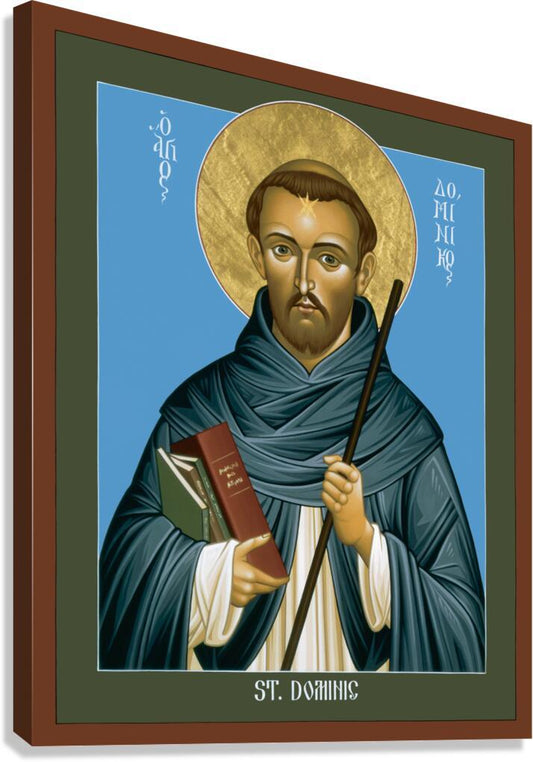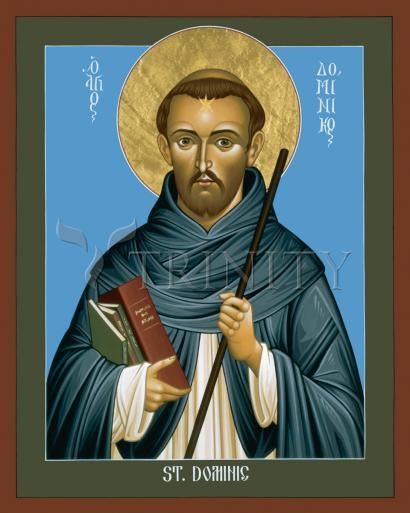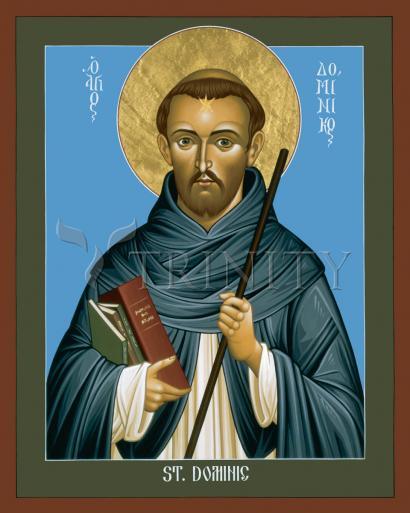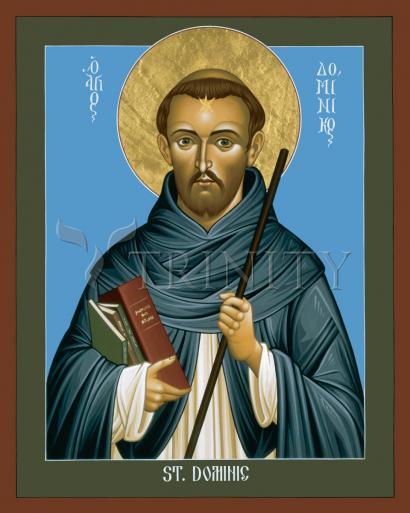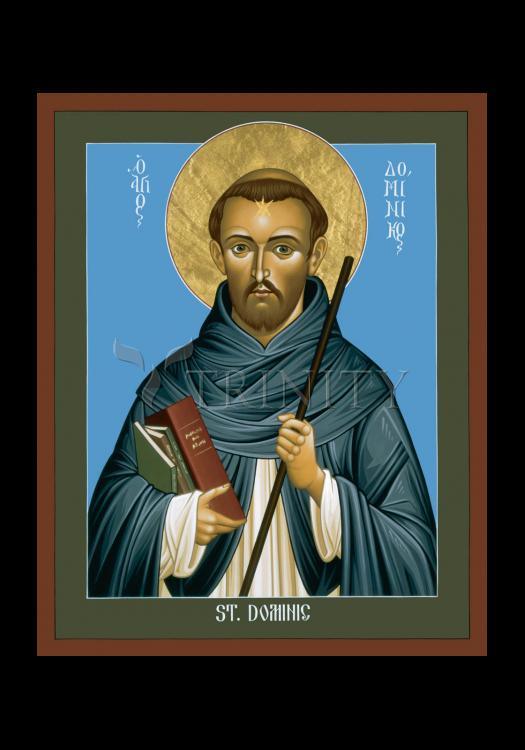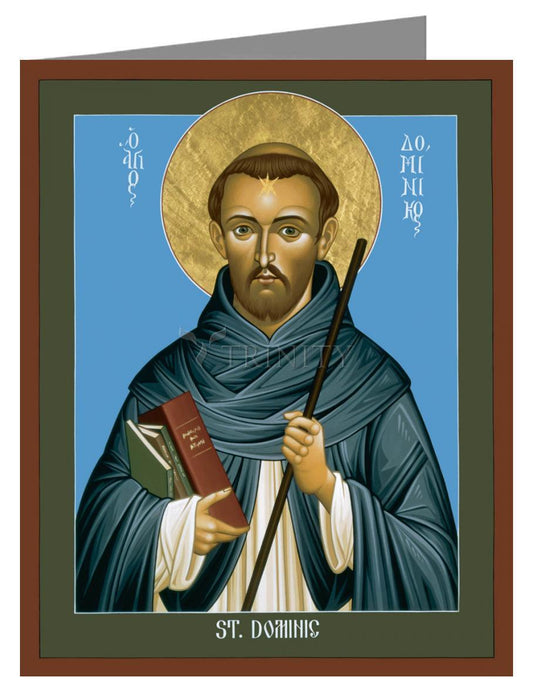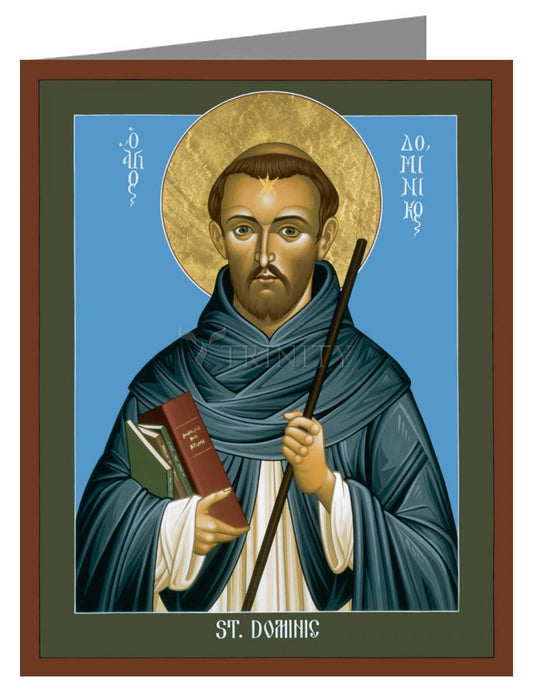St. Dominic (sometimes spelled St. Domonic) was born Dominic Guzman around 1170 in Old Castile, Spain. He was born into a family of privilege and educated in Spain where he attended university for ten years, studying the arts and theology. Education and learning were centerpieces of his life, as were kindness and charity. Saint Dominic Guzman is the patron saint of scientists and astronomy, among others.
The life of St. Dominic is very interesting, as he traveled widely and met people from every level of society. His strong belief in education was cemented in the early 13th century whenhe accompanied the Bishop of Osma on a diplomatic mission that crossed into the south of France. There they encountered the Cathars, a group of educated people who were yet heretics. His attempts to preach to them failed, but he came away from the experience having seen a successful model: learning faith through schooling.
He returned to the region later and established the first Catholic nunnery at Sainte Marie de Prouille, and the nuns later became known as the Sisters of Saint Dominic. He worked very hard in the following years to spread education about Christ. One well-recounted miracle associated with the story of St. Dominic occurred when he was in Fanjeaux, participating in a theological disputation or debate. His manuscripts and those of his adversaries were compared and various points highlighted. Someone suggested that the manuscripts of both sides be subjected to a 'trial by fire'. The manuscripts were cast into a fire, and St. Dominic's miraculously levitated from the flames three separate times, while the other manuscripts were consumed.
Afterward, St. Dominic petitioned the Pope for the right to establish a new religious order dedicated to preaching. Having others besides priests being able to preach was a new idea at the time, and St. Dominic carried it farther by requesting that these new preachers be able to cross diocesan boundaries. His idea was to preach the Gospel to people wherever they needed it. He was known to travel by foot, often barefoot, living a very austere life wherever he roamed, but preaching with great fervor.In 1215 the Bishop of Toulouse offered the use of a house and church in Toulouse, and it was here that the original Dominican order was founded. By the time of his death only six years later in 1221, the Dominican order had spread widely and friaries could be found in most larger cities in western Europe. Thirteen years after his death, in 1234, he was canonized by Pope Gregory IX.
The life of Saint Dominic, works and death were marked by quiet piety and unceasing devotion to the hard work of spreading the Gospel during a turbulent time. He believed in education because an educated person could read the Bible and Dominic had no doubt would then make the informed decision to switch to Catholicism.
In the centuries since his death and canonization the Dominican friars have become renowned for their dedication to teaching as well as study of the Holy Scriptures. Their motto "To praise, to bless, to preach" sums up the core of Dominican beliefs, originating from their founder
Born: 1170 at Calaruega, Burgos, Old Castile
Died: August 4, 1221 at Bologna
Canonized: July 13, 1234 by Pope Gregory IX
Name Meaning: Belonging to God



